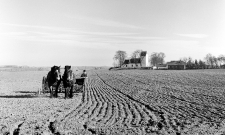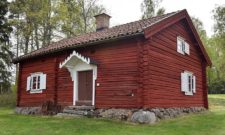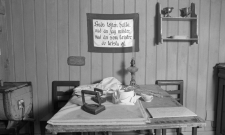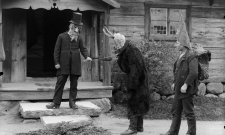Shop our historical maps

Mar
Folklorist Johan Nordlander (1853-1934) tells the story of Norrland's legends and fairy tales, of giants, gnomes and goblins, and how they differ from those in the rest of the country.
It seems as if a definite difference exists between the legends and tales of northern Sweden and those of the rest of the country. Jokes of the kind of A. Bondeson, E. Weström, and E. Svensén are less frequent in the north; but mythical tales and priestly stories are all the more common, the latter being for several reasons to be attributed to the Catholic period, where they present the priesthood in a less favourable light.
This lack of funny stories is easy to explain. If bark is mixed in the bread, it cannot have good soil. The struggle with a harsh climate and a poor soil has given the northern common people the stamp of a serious frame of mind and directed their attention less to the happy aspects of life, as it appeared to fellow tribesmen in other happier parts of the country, than to the spiritual powers, which were supposed to intervene mightily in the life of mankind.
After I had written the essay "On witchcraft, superstition and disbelief among the common people of Norrland", which was included in the 11th issue of this journal1 I have had the opportunity to do further research on this subject. I had a presentiment that a considerable harvest would be made; but that it would be as rich as it proved to be, I had not expected. Limited space compels me to disregard all superstitions and some minor mythical creatures, and to confine myself exclusively to giants, gnomes and tramps, which play the most important part in the popular imagination. The legends here given are rendered in High Swedish, but with some retention of the vernacular expression and word order.
About one of my most important sources a few words may be mentioned here. In the summer of 1880, when I was supported by the Letterstedt Society in Stockholm for research in the allmogony of Ångermanland, I turned, on Hera's advice, to the former root schoolmaster Per Marks in Fors parish in Jemtland, on the border with Ångermanland. He was then 85 years old. In his late childhood his father, a soldier, had died of field sickness during a train to the Norwegian border. His poor mother had to struggle ceaselessly for her own and her children's livelihood and therefore had no time for the moral education of her children. Per grew up to be a self-willed and ungodly leftist. Then he learned magic and became a perfect "wise man".
Then he also took his nickname after the notorious wizard captain of the Jemtland hunter Marks von Wurtenberg, called "troll-Marksen", who lived almost a hundred years ago and was my wise man's ideal. Finally realizing his sinful life, Marks abandoned it and became religious. A root schoolmaster's job was then left to him. He was endowed with a rare memory and could transcribe verbatim the tales and strange sayings he had heard. Nor was he prevented, as is not seldom the case, by any false piety from openly relating what he himself had believed and heard; but his great conscientiousness was a guarantee of the credibility of his statements.
Read more:
Giants in Norrland folklore
The tombs in Norrland folklore
The dwarves in Nordic folklore
Sources
Subscribe to YouTube:
If you appreciate Allmogens independent work to portray our fine Swedish history and Nordic culture, you are welcome to buy something nice in the shop or support us with a voluntary donation. Thank you in advance!
Support Allmogens via Swish: 123 258 97 29
Support Allmogens by becoming a member
Support Allmogens in your will








